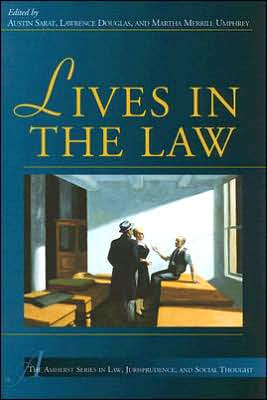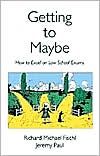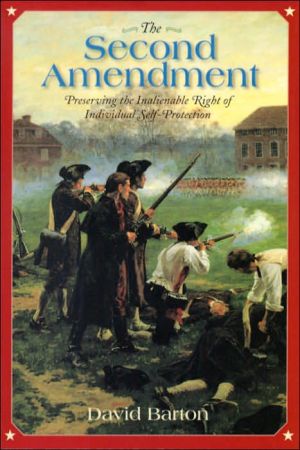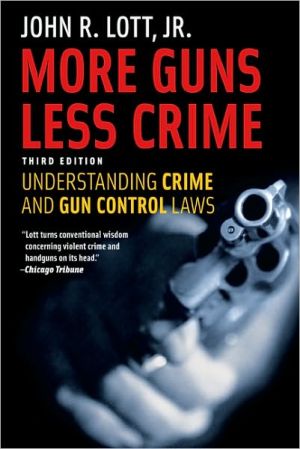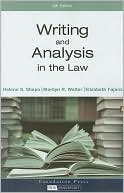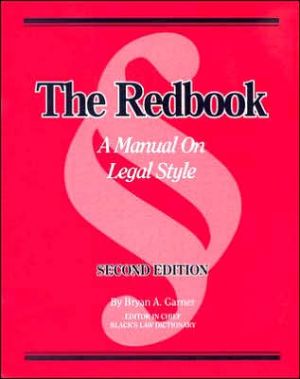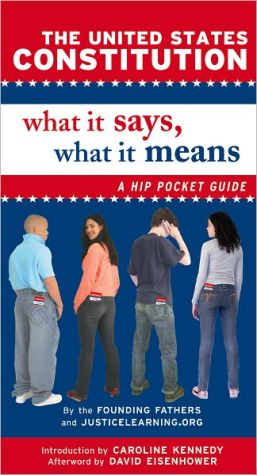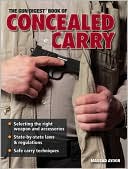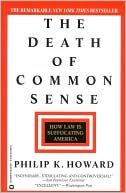Lives in the Law
The essays look at the consequences that legal practice has on the lives of its practitioners as well as on the individual legal subject and on the shape of shared identities. These essays challenge liberal and communitarian notions of what it means to live the law.\ In the first of the essays, Pnina Lahav presents a study of the Chicago Seven Trial to paint a picture of the law's power to serve as a site for the definition of a collective group identity. In contrast, Sarah Gordon focuses on...
Search in google:
Examines how the lives of individuals, social groups, and nations are fashioned by their engagement with the law
\ Lives in the Law\ \ \ The University of Michigan Press \ Copyright © 2002 \ \ University of Michigan\ All right reserved. \ \ \ ISBN: 978-0-472-11253-1 \ \ \ \ \ Chapter One The Chicago Conspiracy Trial as a Jewish Morality Tale \ Pnina Lahav\ [The trial was] a "Jewish morality play." -Jerry Rubin, We Are Everywhere\ I came to wonder whether the judge's efforts to escape his own Jewishness might not explain some of what went on in that courtroom. -J. Anthony Lukas, The Barnyard Epithet and Other Obscenities\ The sixties were marked by a massive challenge to the conventional conception of American identity. The civil rights movement, the antiwar movement, students, hippies, and yippies urged a conceptualization of the struggle as "us against them," seeking a redefinition of the meaning of identity. As expected, the challenge met serious and massive resistance. The conspiracy trial of the Chicago Seven is one battleground where the titanic confrontation between conservative and radical forces took place. It served as yet another stage upon which the conflict about the deeper meaning of American identity was unfolding.\ The Chicago conspiracy trial probably was the result of a sea change in American politics, when the progressive politics of the Great Society gave way to the conservative politics of law and order, amid an escalating war, a swelling antiwar movement, turmoil in universities across the country, and the intensification of black militancy. Shortly after power shifted from the Democrats to the Republicans, President Nixon's Justice Department assembled and put on trial, together, leaders of the different factions of the protest movement: David Dellinger, a well-known pacifist and leader of the National Mobilization Committee to End the War in Vietnam (MOBE), Tom Hayden and Rennie Davis of the MOBE and the Students for a Democratic Society (SDS), Abbie Hoffman and Jerry Rubin, representatives of the counterculture and founders of the Yippie movement, and Bobby Seale, chairman of the Black Panther Party. Their indictment stated that they conspired to cross state lines with an intent to incite a riot. A statute hastily enacted by Congress after the assassination of Martin Luther King and never used before was now deployed to quell dissent.\ Important issues rooted in the meaning of democracy and the scope of the protections guaranteed by the Bill of Rights leap to mind: how much offensive, high-decibel, potentially disruptive speech should society tolerate? When does speech turn into incitement? How much association are members of a group permitted before they are deemed to have turned themselves into a conspiracy to violate a law? How much responsibility should be assigned to the police, whose raison d'être is to maintain order? After the Chicago turmoil the Walker Commission, appointed to investigate the civil unrest, concluded that it was the police, not the citizens, who rioted. Who then should have been prosecuted for offending law and order?\ The conspiracy trial highlights other, no less intriguing, issues concerning political trials. Among them is the appearance of too intimate a relationship between the judge, the prosecution, and the security services (in this case, the FBI); the rigid, oftentimes improper trial procedures deployed by the judge against the defendants; the overt hostility of the prosecution to the defendants and what they stood for; the willingness of the defense lawyers to allow the defendants to shape the trial strategy (thereby turning the courtroom into a theater, sometimes into a circus, and fanning the hostility of the judge toward the defendants); the notorious binding and gagging of Bobby Seale, the only black man among the defendants, as he repeatedly demanded his right to choose his own lawyer or, in the alternative, to represent himself; the behavior of the defendants, refusing to rise when the judge entered the courtroom, munching jelly beans in open court, littering the defense table, and occasionally hurling what the New York Times politely called "barnyard epithets"; and the staggering contempt sentences against the defendants and their attorneys, ranging from two months to four years.\ At the end, the jury acquitted all the defendants of charges of conspiracy. Five were convicted of the individual offense of crossing state lines with intent to incite a riot. The convictions were reversed on appeal. The court of appeals also overturned most of the contempt convictions and agreed that the conduct of the prosecution and the judge was so improper as to deny the defendants their constitutional right to a fair trial.\ This paper focuses on one of the least discussed aspects of the conspiracy trial: the issue of American-Jewish identity as it unfolded during the 1960s in general, and in 1968-69 in particular.\ The question of American-Jewish identity is interesting to me for obvious reasons. I was born and raised in Israel. I do experience a cultural difference between my American-Jewish friends and myself. My mother tongue is Hebrew and theirs English. My history is rooted in the Arab-Israeli conflict and Zionist ideology and theirs in the Founding Fathers, the Civil War, the New Deal, Vietnam. Our sensibilities, associations, intuitions are different. At the same time, the common Jewish ethnicity provides powerful glue. We all share the understanding that Jewishness entails a struggle, a struggle between universalism and particularism, a tension between the wish to be like everyone else and the realization that we are marked as others. For better and for worse, we all share the trauma of the Holocaust. Do we all share the same values and world view? If the Jewish aspect of the Chicago trial proves anything, it is that we don't.\ There is more to my interest in American-Jewish identity. American Jews have played a prominent role in the American legal system of this century-as lawyers, legislators, law professors, and judges. One may even go as far as saying that the integration of American Jewry has been the most spectacular success story of America as an immigration society. And yet the Jewish presence in American law has not yet received a thorough exploration. Since Robert Cover's seminal work "Nomos and Narrative," more has been written about Jewish law and its relation to American culture. In this genre, the assertion of American-Jewish identity in law was expressed through the interweaving of Jewish law into the discussion of American law, as "Nomos and Narrative" does. But the examination of the secular American-Jewish identity has not received enough attention. In general, American-Jewish legal scholars prefer to write about other subgroups: African-Americans, Native Americans, women, and gays. The relative dearth of scholarship about the Jewish presence may reflect the enigmatic nature of this inquiry or the perception that the American-Jewish identity is a nonissue. On the other hand, the fact that so many American-Jewish scholars have been at the forefront of the critical search for equality may mean that their concern is also a subtle vehicle through which to assess the meaning of being a member of the Jewish minority in America. Why this is so is a question that calls for another paper. I am only proposing to encourage a more vigorous dialogue about the meaning of American-Jewish identity in law.\ There is also a general reason to pursue this project. It deepens our understanding of the phenomenon of the hyphenated-American identity and its interaction with law. How do these hyphenated identities, mixing Native American attributes and attributes of other cultures-African, Anglo-Saxon, Asian, Indian, Irish, Italian, Jewish-play out in the law? From this perspective, this essay is a case study of the struggle between the politics of ethnic identity and national identity in the arena of the courtroom.\ Here are, in a nutshell, the particularly interesting aspects of the Chicago conspiracy trial from the perspective of American-Jewish identity. The trial has a judge (Julius Hoffman), three lawyers (prosecutor Richard Schultz and defense counsels William Kunstler and Leonard Weinglass), and three defendants (Abbie Hoffman, Jerry Rubin and Lee Weiner) representing different strands of American-Jewish identity. I shall focus on three: Judge Hoffman, attorney Kunstler, and defendant Hoffman, one a staunch Republican, wealthy, conservative; the second a civil rights activist with a long record as a fighter for racial equality; the third a philosopher-clown, a self-appointed spokesperson for the counterculture and founder of the Yippie movement. If asked, all three would have probably said, "Jewishness had nothing to do with it." And yet, beneath the heated surface of the politics of the trial lay the question of what it meant to be a Jew in America of the sixties, with an emphasis on the right side of the hyphen: Jewish-American.\ As Arthur Hertzberg tells it, three major themes fed the crisis of American-Jewish identity at the end of the 1960s. One was the relationship between the Jewish community and the African-American community. A second was the war in Vietnam. A third was the Six Day War. Throughout the twentieth century, American Jews were strong supporters of racial equality and of the black person's quest for full integration into American society. This support, rooted in the common experience of persecution and religious values, was fortified by self-interest. As Hertzberg explains, "By the mid-1950s, [Jews] had made base camp, through their rapid economic rise, for the final assault on the Mount Everest of elite status in America. Now, through their role in the black revolution, Jews were making their first overt bid for a major place in the American elite. They were announcing themselves as a major force for solving America's worst problem, racial tension." Not every American Jew was supporting the black effort to undo the regime of discrimination, however. The tension in the black-Jewish alliance was simmering for a while, and by the early 1960s it could no longer be ignored. Some blacks were reacting negatively to what they experienced as Jewish patronizing. Jews were beginning to analyze their grievances against African-Americans as well as the ramifications of black equality for Jewish self-interest. The rise of "black power" in the mid-1960s further tested the fragile alliance. Black leaders such as Malcolm X and Stokely Carmichael offered a social analysis that pointed the finger at the Jewish responsibility for some of the black misery. In New York the tension between black demands for more communal participation and for more appointments of public school teachers (many of whom were Jewish and felt threatened by the black demands) erupted into the long 1968 strike. To this, one should add the fact that Jewish stores in the ghettos were the main victims of the riots in the cities. All of the above strained the Jewish-black relationship and encouraged a reassessment of the American-Jewish identity. How should an American Jew think about America's racial problem?\ At the same time, domestic opposition to the American involvement in Vietnam was growing. The mainstream Jewish community, which in general supported the position of the United States government in the cold war, was rethinking its view. While some insisted that any criticism of a war involving the Soviet Union was "bad for the Jews" and "bad for Israel," others were increasingly vocal about America's involvement in what they saw as an unjust war. In late 1966, President Johnson reportedly "was disturbed by the lack of support for the Vietnam War in the American Jewish community at a time when he was taking new steps to aid Israel." Within this context, the growing estrangement between the Old and New Left in America, both heavily populated by Jews, and the tension between Jewish members of the New Left were also affecting American-Jewish identity.\ Last, but not least, events in the Middle East had a bearing on the self-conception of American-Jews. The Eichmann trial of 1962 put before the world, for the first time, the distinctly Jewish narrative of the Holocaust and the Second World War. Five years later, the Six Day War jolted the American-Jewish community, repeating the trauma of the Holocaust. Hertzberg explains: "[During] the Nazi years Jews had been too weak, too concerned about themselves, and too trusting of Roosevelt to go to war with major elements of American power and public opinion. In May-June 1967, some atonement was made for those years. The response to the Middle-East crisis was a way of saying that, come what might, Jews would not repeat such conduct ... the Six-Day War thus united the Jews of America but it also made them somewhat lonelier and even angrier." Attitudes toward Israel, particularly the question of the legitimacy of retaining the vast territories conquered in 1967, were tied intimately to the first two themes raised above. Many members of the civil rights movement as well as some in the antiwar movement and the New Left sided with the Arab, particularly the Palestinian side, of the Middle East crisis. Their political positions further shook American-Jewish identity by problematizing questions about racism, oppression, equality, and liberty.\ How does all this relate to the fact that so many of the participants in the Chicago conspiracy trial were Jewish? On the surface, it does appear as if "Jewishness had nothing to do with it." Indeed, John Murray Cuddihy, in his The Ordeal of Civility, points out that "almost all the media eliminated the Jewish infighting in their accounts of the Trial." However, despite the compelling universalistic allure of this thesis, it is not persuasive. Enough commentators have referred to the Jewish presence in the trial to indicate that below the surface the Jewish factor had significance and meaning. Helene E. Schwartz, one of the defendants' appellate defense counsel, while denying the significance of Jewishness in the trial, quoted a Chicago lawyer as saying, "It's said that every time Julius goes on the bench, he proves that he is not small, not stupid, and not Jewish." Tom Hayden, in his book The Trial, described Judge Hoffman as an "overassimilated Midwestern Jew." Hayden did not mention the Jewishness of the defendants or the defense counsels. Richard Nixon, on the other hand, who was elected president in 1968, saw Jewishness only on the defendants' side. He was probably expressing the conservative stereotype that rabble-rousers and leftists (people like Marx, Trotsky, Rosa Luxemburg, Emma Goldman, Julius and Ethel Rosenberg) were Jewish. By and large, each side noticed Jewishness in the other camp, but failed to see it in its own camp. Thus, both the Left and the Right shared the perception that Jewishness was there and that it was somehow negative. No wonder, then, that each side, if invited to reflect on its own Jewishness, would insist that "Jewishness had nothing to do with it." The drive to compartmentalize the (private) Jewish self from the (public) American identity was a necessity in a social climate that associated "Jewishness" with the "other." I argue that because of the peculiarity of the Chicago conspiracy trial, where many of the ordinary rules of decorum were suspended, the ever-present undercurrent of one's Jewishness surfaced and its meaning was called into question. Thus, the courtroom served as space where different conceptions of American-Jewish identity clashed and informed various conceptions of law.\ Judge Julius Hoffman was seventy-four years old when the trial began. He came from a large family and enjoyed a comfortable childhood. He was a short, bald man, who paid close attention to his appearance and was always elegantly and meticulously dressed. In 1928 he married a wealthy divorcee, Eleanor Greenbaum, and remained devoted to her until she died in 1980. Julius and Eleanor did not have children, but Julius took his responsibilities as a stepfather seriously and raised Eleanor's two sons from her previous marriage as if they were his own. Julius Hoffman graduated from the Northwestern Law School in 1915 and for a while was Dean John H. Wigmore's research assistant. In 1953 President Dwight D. Eisenhower appointed him to the federal bench. His interest in legal scholarship distinguished him from most judges. Through the 1950s and 1960s, he regularly published reviews of law books and short doctrinal articles.\ (Continues...)\ \ \ \ \ \ Excerpted from Lives in the Law Copyright © 2002 by University of Michigan . Excerpted by permission.\ All rights reserved. No part of this excerpt may be reproduced or reprinted without permission in writing from the publisher.\ Excerpts are provided by Dial-A-Book Inc. solely for the personal use of visitors to this web site.\ \
Theoretical Perspectives on Lives in the Law: An Introduction1The Chicago Conspiracy Trial as a Jewish Morality Tale21Law and Everyday Death: Infanticide and the Backlash against Woman's Rights after the Civil War55Dependency by Law: Welfare and Identity in the Lives of Poor Women83Labor's Subjects123France and Trials for Crimes against Humanity215Contributors233Index235
